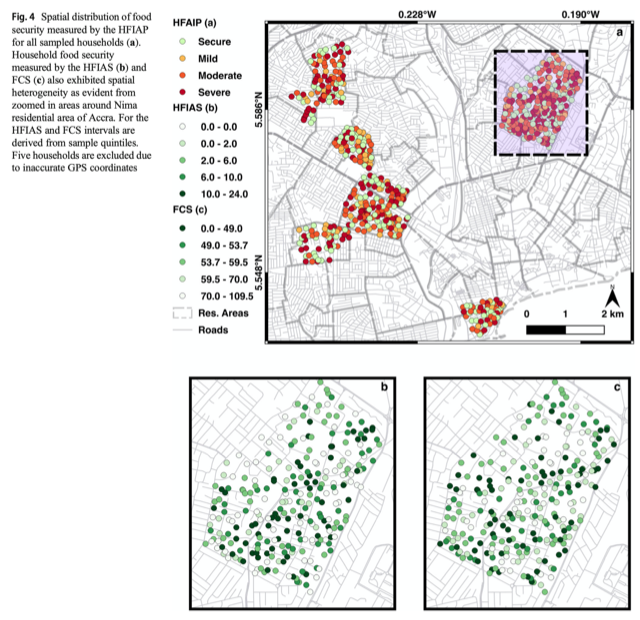Comparing measures of urban food security in Accra, Ghana

Tuholske, R., et al. (2020) “Comparing measures of urban food security in Accra, Ghana”, Food Security, doi:10.1011/1234-123/11/2.
Abstract:The urban population in Sub-Saharan Africa is projected to expand by nearly 800 million people in the next 30 years. How this rapid urban transition is affecting household-level urban food security, and reverberating into broader food systems, is poorly understood. To fill this gap, we use data from a 2017 survey (n = 668) of low- and middle-income residents of Accra, Ghana, to characterize and compare the predictors of household-level food security using three established metrics: the Household Food Insecurity Access Scale (HFIAS); the Household Food Insecurity Access Prevalence (HFIAP); and the Food Consumption Score (FCS). According to HFIAP, 70% of sampled households are food insecure, but only 2% fall below acceptable thresholds measured by FCS. Only one household reported sourcing food from modern supermarkets and fewer than 3% produce food for consumption through gardening, farming, or fishing. Instead, households rely on purchased food from traditional markets, local stalls and kiosks, and street hawkers. Results from a suite of general linear models show that household assets, education, and demographic characteristics are significantly associated with food security outcomes according to HFIAS and HFIAP. The poor correlation and weak model agreement between dietary recall such as FCS, and experience-based food security metrics, like HFIAS and HFIAP, highlight limitations of employing historically rural-centric food security measurement approaches within the urban context. Given that Sub-Saharan Africa’s future is urban, our results add empirical evidence in support of the growing chorus of scholars advocating for comprehensive urban-oriented food security research and policy agendas across Sub-Saharan Africa.
